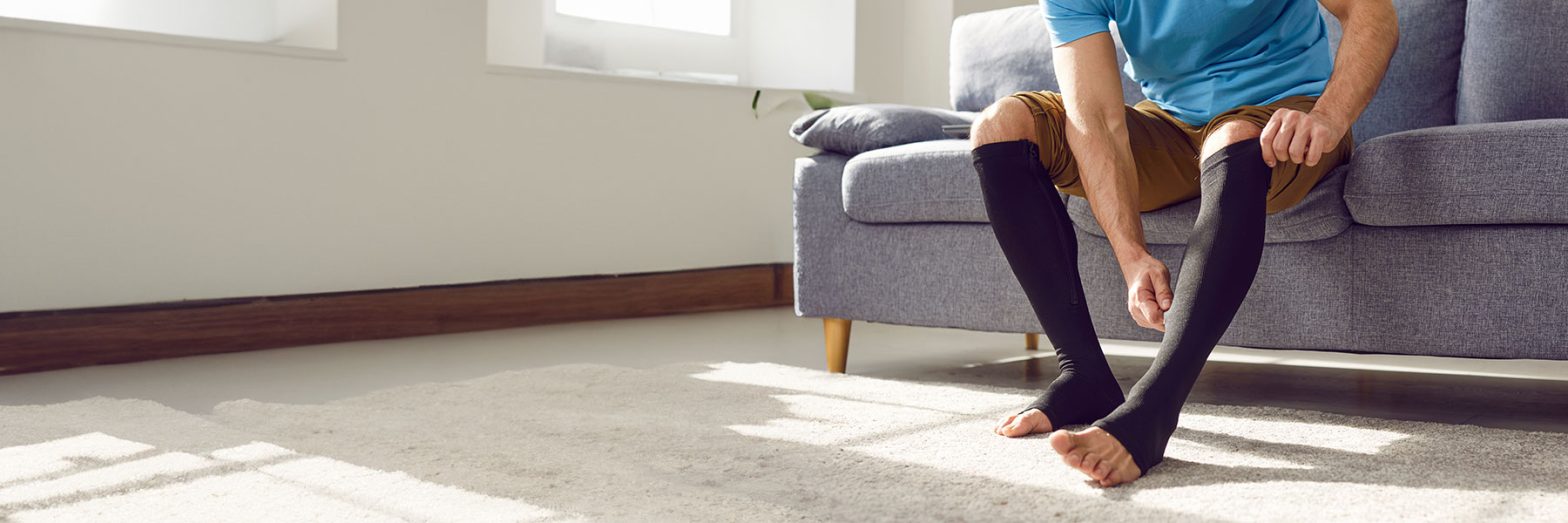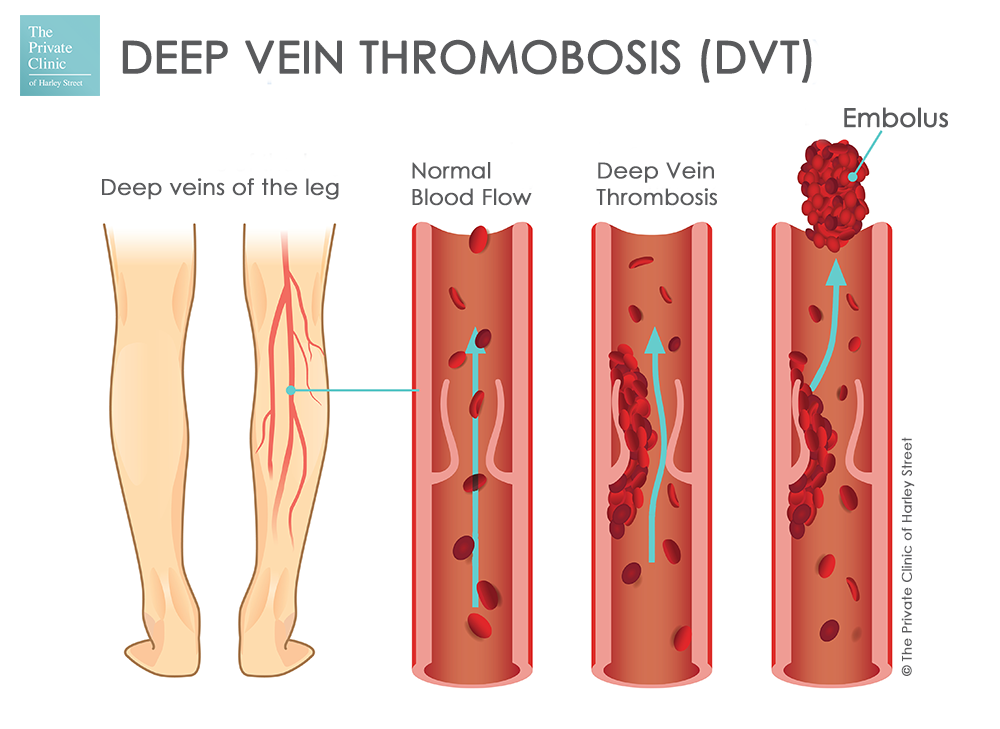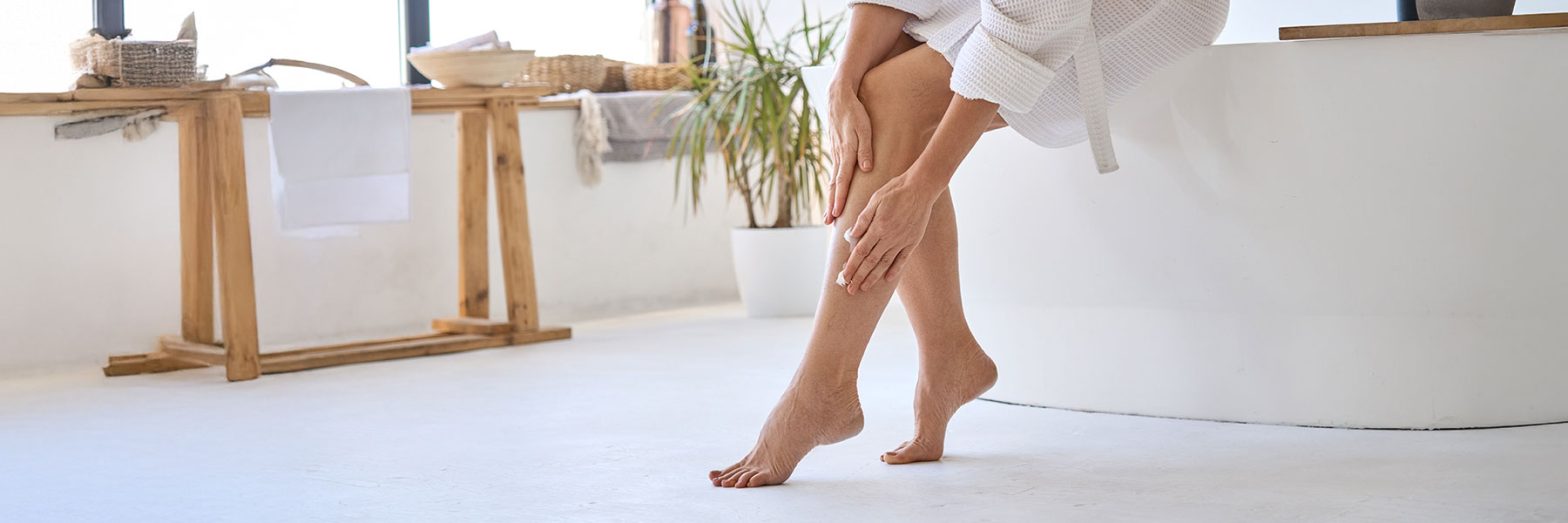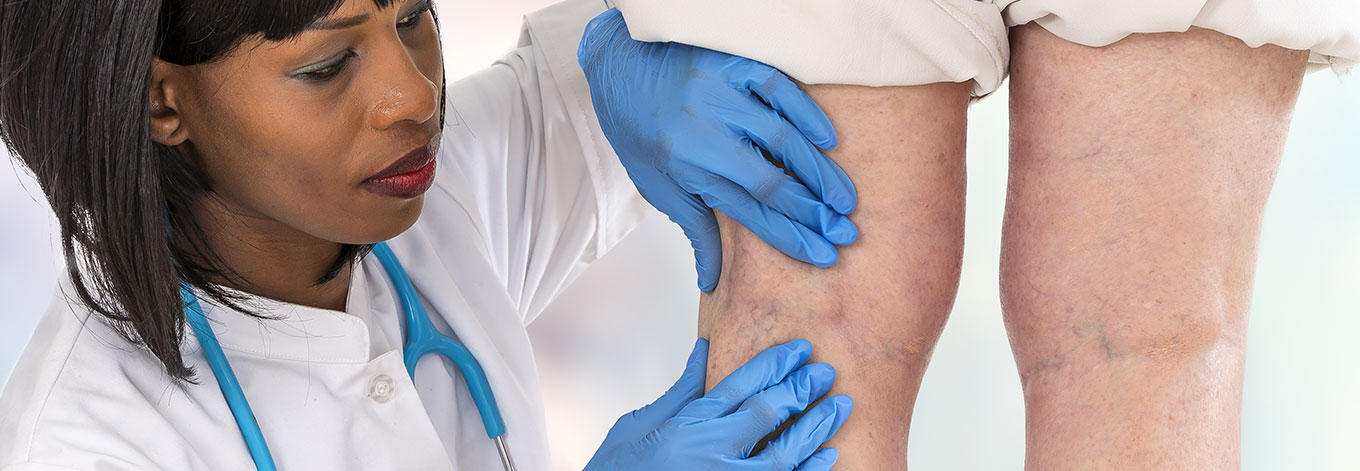
What is Deep Vein Thrombosis, the causes and treatment?
What is Deep Vein Thrombosis?
Deep vein thrombosis (DVT) is a blood clot that forms within the deep veins of the body. At The Private Clinic, this is not a condition that we treat but we do like to raise awareness of it as things like having a surgical procedure can increase your chances of developing DVT.
We also see many patients with varicose veins which can also contribute to the development of DVT.
What is deep vein thrombosis?
DVT occurs when blood clots (thrombus) form in the deep veins of the body, most commonly the legs and calves but can also occur in the arm or tummy.
Is deep vein thrombosis serious?
It is a serious condition as these clots could be dangerous if they were to break loose and travel to the lungs. They can get stuck in the lungs and block blood flow which is known as a pulmonary embolism. When these two instances occur it is called a venous thromboembolism (VTE).
What are the symptoms of deep vein thrombosis?
Deep vein thrombosis can cause a variety of symptoms including:
- Swelling of the affected area
- Pain and/or cramping when walking or standing
- The feeling of warmth around the affected area
- Red or darkened skin
However, sometimes there are no noticeable symptoms.
Who is at risk of deep vein thrombosis?
DVT is more likely to occur in people who;
- Over the age of 60
- Have had DVT before
- Are overweight
- Smoke
- Have varicose veins
- Take contraceptive pills or hormone replacement therapy (HRT)
- Have cancer or heart failure
But you are also more at risk of developing DVT if you:
- Have recently had an operation and are not able to move around much
- Are dehydrated
- Are pregnant or within the 6 weeks after having a baby
- Have been on a long journey by plane, car or train
- Are confined to a bed
Can you treat deep vein thrombosis?
You will need to have an ultrasound scan to detect if you have DVT. The main treatments for DVT include blood thinning medication which is prescribed for around 3 months. In some cases, you may require surgery to remove the blood clots or to stop them from forming.
If your medical team feel you are at risk of DVT, such as during pregnancy, following pregnancy or after a procedure or operation that may leave you unable to move around such as a leg break you will often be prescribed blood thinning injections to help reduce this risk.
Can Varicose Veins Cause Deep Vein Thrombosis?
DVT and Varicose Veins both are caused by issues with blood circulation within the legs, but they are very separate conditions.
Varicose veins are caused by damaged valves within superficial veins that lead to a pooling of blood within the vein.
DVT is the formation of a blood clot within the deeper veins of your legs.
The main link between DVT and Varicose veins is that the impaired circulation and damaged valves in varicose veins can increase the risk of developing DVT if left over time.
Find out more about treating Varicose Veins here.
Why am I at risk of deep vein thrombosis after surgery?
Having surgery can increase your risk of developing DVT especially if your mobility is reduced following surgery. Inactivity can cause blood to collect in the lower part of your body. Your body may also encourage blood clotting in response to the procedure being performed and foreign matter such as tissue debris, collagen and fat may be released into the bloodstream which causes blood to coagulate or thicken.
Whilst the procedures we perform at The Private Clinic are all relatively low risk procedures, we still inform all of our patients of the signs of DVT and will always perform follow-up calls 24 hours after your procedure to ensure you are not a risk.
We provide detailed information about DVT to our patients along with advice on how to prevent DVT from occurring.
Find out more about what to expect with surgery at The Private Clinic here.
How to prevent deep vein thrombosis?
Preventative measures to reduce the risk of developing DVT include:
- Being active – Regular physical activity promotes a healthy blood circulation. This includes walking, stretching, and taking regular breaks from sitting.
- Healthy Diet – Limit your intake of high-fat and processed foods in favour of fruits, vegetables and whole grains.
- Keeping Hydrated – Ensuring you are well hydrated throughout the day will prevent blood from thickening and clotting.
- Avoid Smoking – Quitting smoking can help to reduce your risk of DVT.
- Reduce Alcohol Consumption – Excessive alcohol consumption can contribute to DVT.
- Maintain a Healthy Weight – Obesity is a significant risk factor for DVT.
- Compression Stockings – If you are at risk, compression stockings can help to apply gentle pressure to the legs to aid in blood circulation.
Get in touch
To find out more information about the venous treatments we offer including varicose vein and thread vein removal, please contact us on 0333 920 2471 or use our vein treatment online contact form.
Sources
-
NHS – DVT (Deep Vein Thrombosis)
-
Healthline – Tips to prevent blood clots after surgery
-
WebMD – Deep Vein Thrombosis (DVT): Symptoms, Causes, Treatment








